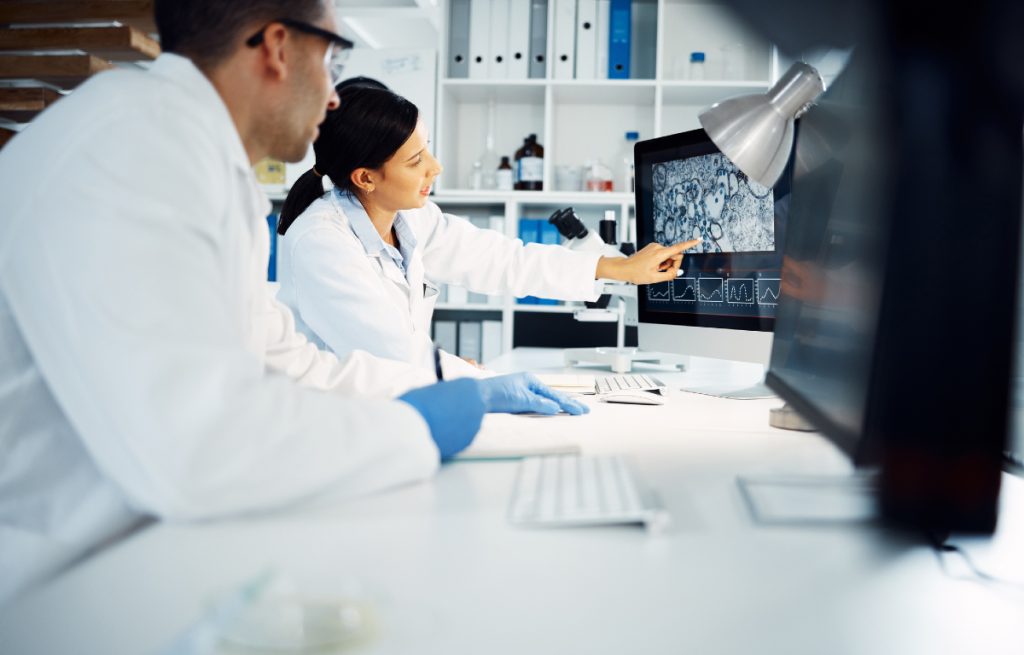
As a clinical pathologist I have been fortunate over the years to encounter many Einstein medical students in diverse settings—“career speed dating,” lectures, didactic small groups, and even pathology rotations. They are invariably surprised when I describe both my career path and the scope of my daily clinical practice. That surprise often stems from misunderstandings about pathology.
To shed a little light on some of the amazing opportunities pathology has to offer, I present here several myths about pathology and counter them with the reasons medical students should consider joining the field.
“Pathologists are extraneous to patient care; the patient’s doctor is the important one.”
Imagine your favorite movie. Now imagine that movie without costumes, set design, lighting, camera operators, makeup, or any visual effects … only actors. Not much of a movie, is it? Pathologists are board-certified health professionals performing crucial patient-centered services in every subspecialty. Simply because we are sometimes less visible to the patient does not make the work we perform any less essential.
Take, for example, an older patient who may be anemic. A physician will order simple blood counts and iron studies. From that moment on, the department of pathology is driving everything that happens. Phlebotomy—which is responsible for the collection of the patient’s blood—is a division of pathology. The laboratory running the test? Also part of pathology. The immunochemical test that is run on the patient’s stool (since anemia in this patient may be related to a colon tumor)? Again, pathology. A biopsy may be needed; certainly pathology—and on and on. We are practically everywhere in the hospital environment, and the generally smooth movement of many processes is a testament to the efficient systems-based practices that pathology departments employ on a daily basis.
“I bet your patients never talk back to you!”
I get this one even from experienced physicians. While everyone can conjure an image of a favorite TV medical examiner working alone in a morgue (Scully, Bones, Ducky), the area of forensic pathology is only one of a vast array of practices within the field. Pathology is wildly more diverse than the way it is portrayed in pop culture. Nearly every subspecialty of medicine has a complementary subspecialty within pathology. A recent JAMA publication relating to pathology workforce data says that only about 4% of U.S. pathologists practice some form of forensic pathology. Need examples of pathology’s diversity? Consider transfusion medicine, transplant immunology, molecular pathology, medical microbiology, hematopathology, and chemistry informatics … and just about every organ system has its own subspecialty of surgical pathology.
“With artificial intelligence [AI], machine learning, neural nets, and more, pathologists will soon be replaced.”
Assistive AI technologies will surely change the practice of medicine in many areas, not just pathology. But do you know which medical specialty has entire training pathways dedicated to the collection, storage, and complex analysis of big data? That’s right: clinical informatics and digital pathology are areas of training and practice within pathology. AI isn’t scary to pathologists; it is being embraced as a tool that allows for greater efficiency. Cardiologists didn’t become extinct when echocardiograms were invented—and neither will pathologists be replaced by AI.
Current AI models are being applied to pathology in fairly narrow ways. Just knowing how remarkably complex the diagnostic categorizations within surgical pathology are gives me some confidence that AI models will be well integrated to perform specific tasks. This makes them ideal tools to help, not replace, pathologists.
“I don’t think I would be able to handle the social isolation of pathology.”
Trust me, we don’t get lonely. Pathology departments have some of the largest staffing needs of any hospital department, meaning our interactions extend far beyond our own work and into immense networks of intra- and interdepartmental relationships.
Patient diagnoses are rarely based on a single laboratory’s work, and complex workups can involve many different laboratory subspecialties. Even more essential are the relationships pathologists have with patient-care teams. Pathology laboratories also have their own technical, supervisory, managerial, and administrative needs. Pathologists engage with one another about shared patients on a near-constant basis, and these internal relationships provide opportunities to practice valuable leadership skills as well.
With all of this in mind, I encourage medical students with a passion for diagnostic challenges to consider pathology as a career choice. Even if pathology may not be right for you, it’s essential to gain an understanding of the complexity associated with pathology- and laboratory-based diagnostics. Pathologists are vital to patient care and to the broader hospital environment. I believe that a greater understanding of the roles pathologists play will lead to a greater appreciation of the immense value we offer. Best of all, we love to be consulted and are here to help. I truly hope this helps dispel some of the myths surrounding pathology, and that we see more students who want to join us in our departments soon!
Dr. Goldstein is assistant professor of pathology at Einstein and director of Montefiore’s Infectious Disease Testing and Molecular Genetic Laboratories.

